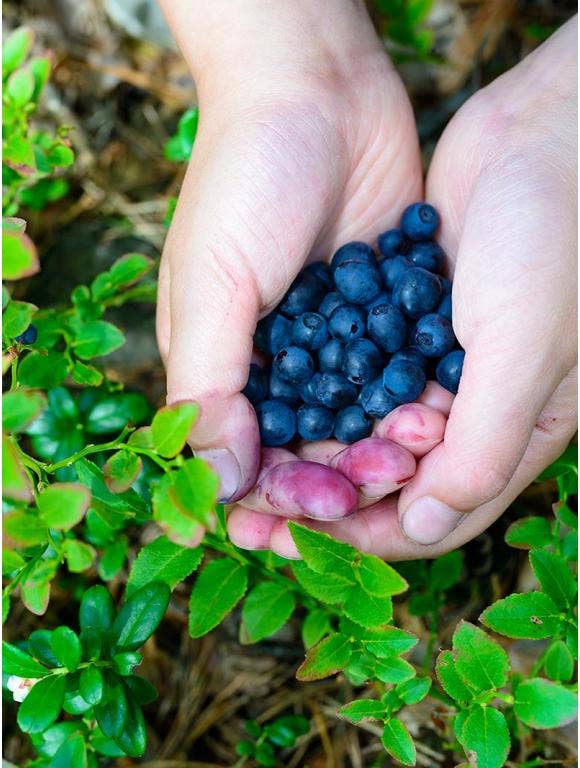
Blueberries will live and produce for 40 to 50 years. Attending to their ideal location and conditions at planting will guarantee you delicious fruit for many years. This makes learning how to grow blueberries a valuable skill that may yield bountiful harvests for decades to come.
Blueberries will only grow well in soils that meet their needs:
•  Soil must drain well. If water stands in the location you are planting for 2 days, don’t plant a blueberry.
Soil must drain well. If water stands in the location you are planting for 2 days, don’t plant a blueberry.
• Blueberries grow best in acidic soils with a pH of 5.0
• Incorporating rich organic matter into the soil or as a top dress is ideal.
• If planting a row of blueberries (space plants 4-8 feet apart), consider "hilling" the plants; raise them above the natural soil level by 12-18" high and 3' wide. This improves drainage, and provides a row for constantly adding organic matter.
Blueberry plants need full sun:
Once you have your location selected, make sure that the location will get full sun, at least ¾ of the day. Blueberries will tolerate partial shade, especially late in the day.
Blueberries will grow in higher pH, but to achieve highest production, you will need to amend the soil around the plants. This can be done easily over time. Don’t try and reduce the pH all at once; a .5 per year reduction is ideal. Lower your pH by using the following:
• Sawdust from any conifer (pine, spruce, fir). If you use sawdust, pay attention to Nitrogen; if leaves are yellowing, that indicates a Nitrogen deficiency.
• Ammonium Sulfate fertilizer
• Ground Sulfur fertilizer
How to Plant Blueberry Plants
Plant blueberries at exactly the same depth as grown at the nursery. Dig the hole twice the size of the roots, and back-fill with a rich compost mixture. If compost is not available, use the finest bark mulch you can find, and add 10% peat moss. Once planted, continue to add fresh compost as a top-dressing to build up your organic matter. Once planted, remove 25% of  the branches; this will promote new, vigorous branching, and the 25% you removed will be replaced quickly.
the branches; this will promote new, vigorous branching, and the 25% you removed will be replaced quickly.
During the first year, the plants are getting established, and you will not need to prune until year 3, after they have finished fruiting. Pruning is done well when you open up the inside of the plant and remove the oldest, darkest branches.
Blueberries, because they are shallow-rooted, do require more water than most fruits so the surface roots do not dry out. Blueberries respond best to quality (deep) watering rather than keeping the surface moist. Water will move to the surface.
Fertilize in early spring, as leaves are breaking from dormancy. A soil test is best, but a 10-5-5 is a good, well-balanced fertilizer. A second fertilizer application after pruning will provide the nutrition needed for the new growth to break from the pruned branches.
How to Grow Blueberry Plants
Enjoy the four-season taste and beauty of a blueberry plant: Spring’s flowers; Summer’s fruit; Fall’s foliage; and Winter’s colorful branching. A plant for every season!






















